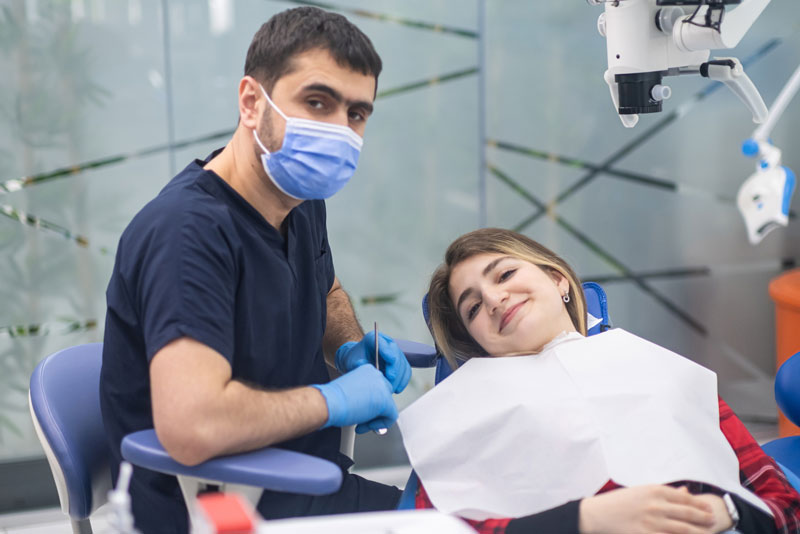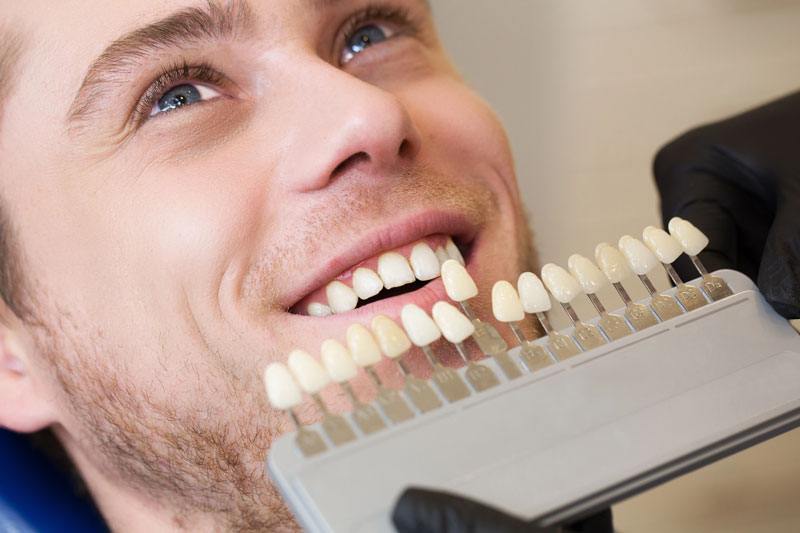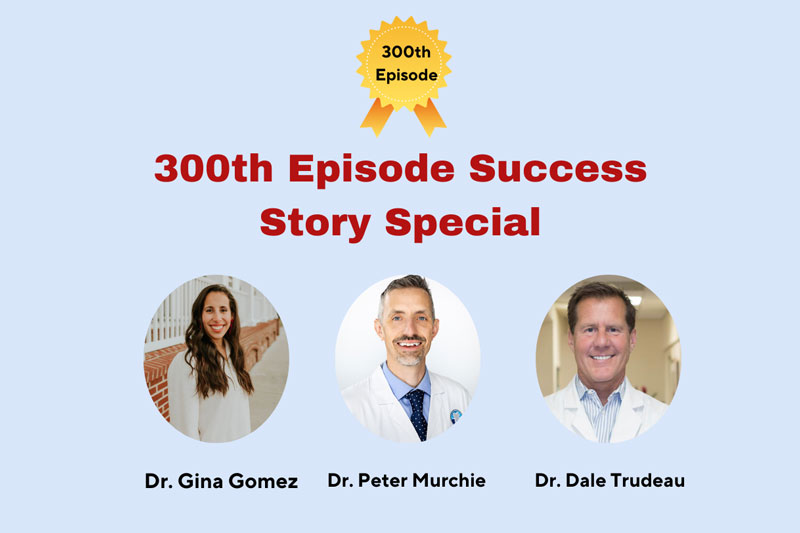Episode #302: You Can Have a Profitable Practice AND Serve Those In Need
Listen Now
Podcast: Play in new window | Download
Subscribe: RSS
Dental anxiety or dental fear is estimated to affect close to half of the population. This means a large portion of the population has been avoiding treatment and is at risk of severe oral health issues. Oral conscious sedation offers these patients a method to manage their anxiety and calmly receive the dental care they need.
In this episode, Gary and Naren discuss the common forms of sedation and effective measures a practice can take to attract these fearful patients and increase their profitability.
Naren: This is the less insurance dependence podcast show with my good friend Gary Takacs and myself Naren Arulrajah.
Gary: we appreciate your listenership your time and most of all we appreciate your intention to reduce insurance dependence in your practice. Our goal is to provide information that will help you successfully reduce insurance dependence and convert your practice into a thriving and profitable dental practice that provides you with personal professional and financial satisfaction.
Gary: welcome to another episode of the less insurance dependence podcast. I’m Gary Tackas your podcast co-host. We have an exciting topic for you today because of the difference this can make in your practice. This episode is titled oral conscious sedation as a strategy to reduce insurance dependence. You’re going to enjoy this one especially when you understand what an incredible difference this can make and what a giant step this piece is to help you successfully reduce insurance dependence in your practice. Hey before we get that though I want to thank our listeners that have gone on iTunes and written a review for the less insurance dependence podcast. We received one the other day that I want to take a minute and just read. It certainly made my day and here’s what that review said. I like listening to podcasts on my way to work and this one has so much relevant information that I often pause it and ask Siri to remember a piece of information for me. It’s very specific relevant helpful information that I would expect most consultants to charge me to get access to. Love this podcast. Well thank you so much for the doctor that wrote that review. Certainly, made my day and Naren, how does that review sound to you? Does that make your day?
Naren: It definitely does. I know we put a lot of effort into it and you put a lot of time preparing for it. So, it definitely makes my day Gary for sure.
Gary: hey Naren, I wanted to also kind of kick off this podcast episode by thanking you and your team at EKWA for all that you’re doing for us we’re having here we are as we’re recording this towards the end of the month and we are seeing awesome new patient flow thanks to EKWA. So, Naren I wanted to thank you and your team for all that you do to supply us with a healthy volume of new patients and I know you’re committed to helping more dentists master the world of digital marketing and you’ve been kind enough to offer our listeners here at the less insurance dependence podcast a complimentary marketing strategy meeting. I’d like to put the link in the notes or show notes where they can schedule that meeting with Lila. Would that be okay if we did that?
Naren: Absolutely Gary, thank you for thank you for your comment. I appreciate it and absolutely we can we can do that absolutely
Gary: I know that’s something you normally charge for however for the courtesy of our listeners there’s no charge. It has a 900-dollar value. However, there is no charge for our listeners and I can assure you, if you’re listening to this you will love the time spent with Lila. You’ll learn not only about marketing about digital marketing, you’ll learn what your practice looks like in the eyes of google and very specific things you can do to improve your digital marketing in your practice. So, you’ll learn about marketing but you’ll also learn things about your practice you likely didn’t already know, time very, very, well spent. Anyway, thank you Naren for supporting our listeners in that and the opportunity for them to schedule a complimentary marketing strategy meeting.
Naren: Thank you so much Gary. I appreciate it. Let’s jump in. I really think today’s topic is going to be a great topic because we both know Gary and I’m sure you have, you work with 2200 clients you know this better than anybody that there is a large part of our population that doesn’t go and see the dentist. I mean some people probably don’t see the dentist for five years ten years and it’s just maybe because they’re afraid of the dentist, maybe they’re afraid of the pain or maybe they’re sick of the insurance limitations they’re like forget it, I don’t want to waste my time just going there and just doing piecemeal dentistry. So, whatever the reason, they don’t go to the dentist especially men I think
Gary: In preparation for this episode I did some research. Naren, you’re spot on. Do you know that 49 percent of North Americans, 49 percent of North Americans put off a visit to the dentist because of fear? 49 percent. That’s almost half
Naren: Right
Gary: Put off a visit because of fear. Now it’s irrational. It’s completely irrational but fear by itself can be irrational
Naren: Right
Gary: Now let’s take it a layer deeper. We know from hard data that 22 percent of North Americans won’t go to the dentist at all because of fear and you are also correct in the gender mix. Certainly anyone could experience apprehension of going to the dentist but more men experience it than women and conversely more women historically visit the dentist on a regular basis than men and we’ll talk about that as we go throughout this episode but one of the things happened because of insurance Naren is that insurance has trained people and practices to kind of do single tooth dentistry. It’s trained people. Think about this for a minute. Dental insurance was invented in 1968 and originally it was been invented by dentists for dentists well that come has changed radically over the years, the annual award in dental insurance policy in 1968 was a thousand dollars. That meant you got a thousand dollars’ worth of benefits, the same kind of percentages that we see today. For example, restorative dentist dentistry is often covered at fifty percent. Think about what the thousand dollars got you in 1968. The average crown fee by the way was a hundred and fifty dollars, a hundred and fifty dollars and typically most dental insurance plans in 1968, the patient paid seventy dollars, the insurance paid 75 dollars. So how many restorations, how many crowns could they get with their thousand-dollar annual award from the insurance, how many can they get? A quick math 14, 15.
Naren: Yeah 14, 15. That is correct
Gary: Almost a full mouth reconstruction depending on what their condition their mouth was
Naren: Right
Gary: Now let’s fourth fast forward today many insurance companies have the same thousand-dollar annual limit
Naren: Wow
Gary: Where now the average crown fee is somewhere between eleven hundred and twelve hundred dollars. So how many crowns can they get with their annual award especially if it might need a build-up or maybe even needs a root canal, one tooth
Naren: Right!
Gary: And so, it’s kind of had a subversive effect on training dentists and even patients to do single tooth dentistry
Naren: yeah and I think I think the problem that I see as a patient as a consumer is like I want solutions; I don’t want 10 percent of the solution. So again, I’m just talking as a man. I mean I don’t know if women feel this way but like if you tell me come waste my time with you, i’ll give you ten percent solution I won’t show up. I’m just telling speaking enough from my mindset
Gary: even just silly, let’s use a silly example on the medical side. In plastic surgery, if the patient wants to have a facelift, they’re not going to say, well do half my face this year, we’ll do the other half next year.
Naren: Right, right!
Gary: In fact, sadly this has had and I can’t think of a better word than I just used. This has had a subversive effect on dental practices because it trains the dentist now to fall into the single tooth kind of fix it patch it mentality instead of comprehensive care, and it’s insidious, but here’s the great news. Doctors would you like to break free from that? Would you like to break free from that? Oral conscious sedation gives you the opportunity to literally break free from that and I want to be clear that I’m talking about oral conscious sedation, I’m not talking about IV sedation. IV sedation certainly has its application in dental practices and however there’s much more complex certification to go through and it may or may not fit your objectives in your practice, but oral conscious sedation on the other hand, first of all what is it? The patient will take a pill before their visit typically it’s triazolam. So, go back to dental pharmacology, I hope none of our listeners broke out into a cold sweat when I said dental pharmacology but go back to dental pharmacology, triazolam is a member of the benzodiazepine family, very much like Valium but with better qualities than Valium, much better qualities than Valium. What are some of the qualities of triazolam? By the way the street name for triazolam. Or a more common name for triazolam, is Halcyon. Halcyon and so what are some of the qualities of it. It has quick half-life; it exits the body very quickly. It doesn’t leave that hangover effect that foggy hangover effect like other benzodiazepines will. So, it exits the body very quickly. It has, it’s very safe historically and we know other safety measures we can put in place to make it even more safe. So basically, the patient will take a pill and will its conscious oral conscious sedation. So, the patient is awake, however they don’t remember anything of the visit. They’re fully conscious. So, you can say to the patient, if you’re the patient Naren, Doctor Paul, can say to you Naren turn to the left, open wider for me, turn to the right open wider for me, you’ll completely respond but you won’t remember anything in the appointment. You won’t remember any of your conscious but you won’t remember anything. It has the effect of wiping out your memory of the appointment. Now about the only downside is that patient has to arrange for transportation because they can’t drive home but that’s about the only downside and as practices market to attract patients that have apprehension or patient issues that are fearful for that if we talk about fearful patients, we just talked about 49 percent of the population. Naren, I’m going to have a hard time thinking of any other category of treatment that applies to that vast of a group of people like say adult orthodontics are 49 percent of the universe interested in adult orthodontics, I don’t think. So, I think it’s a high number but I don’t think its 49 percent
Naren: And I also one of the things you have always talked to me is it like sometimes you need a talking point, so like when, let’s say there’s a person or somebody’s family member who perhaps is not really doesn’t go to the dentist for because they’re afraid or because they don’t like the tooth dentistry or whatever it is, you can now talk about it, you can address it and say hey guys we have a solution
Gary: We have a solution, you bet.
Naren: If your husband is afraid or your wife is afraid anyways can you talk more about that Gary?
Gary: Yeah so, we talked about what it is. By the way I do recommend you get training for this anytime we deal with the airway, I don’t think we can be over trained. Would you agree with that Naren?
Naren: Yes
Gary: Training, training, training, training, training, I know you’re likely if you listen to this, you’re a CE junkie but I would encourage you to get some training on this. There are a number of places you can go for training on oral conscious sedation. I like DOCS, Paul and Tim have both been trained by docs D-O-C-S. Doctor Michael Silverman is the founder, the educators. So, it stands for it’s an acronym D-O-C-S, dental organization for conscious sedation. They have intro courses, intermediate courses advanced courses, typically they’re a day or day and a half, all the information that you need, we use a pulse oximeter you’ll need a little bit of equipment but not much, we use a pulse oximeter, it’s a fingertip cuff that measures oxygen content in the blood, so we can monitor the patient’s vitals as they’re on oral conscious sedation. In our practice we choose not to get exotic with it Naren, now you certainly can become more sophisticated in your application of oral conscious sedation. We choose not to. We simply use level one anxiolysis is what it’s called in the sedation world which means single dose. So we don’t multi-dose or we don’t cocktail meaning that we’ll add other pharmaceuticals on top of, you can do those things and if you’re interested certainly there’s a world of education that you can get but we find single dose, just level one anxiolysis allows us to take care of a vast majority of people who are apprehensive and fearful but now let’s talk about how to market this. So how to market this is really two ways. One would be that I would absolutely take a deep dive in digital marketing, to attract those people in your community that would love to be seen where every visit can be as comfortable as possible and so Naren, I’ll defer to you on digital marketing and your experience with EKWA but I bet you’re licking your lips I bet you’re salivating thinking of all the different ways and you know what you do for us yeah but all the different ways you can help the office help fearful patients, what is marketing about? It’s all about getting people to find you and then given a reason to choose you. So, but now let’s be more narrow, it’s about getting fearful patience which by the way is roughly 50 percent of the audience
Naren: Right
Gary: Find you and then to choose you and that would be your realm and I get excited about that and now but let’s talk about something the other way that practices can mark market oral conscious sedation. It’s a very simple thing to do but it’s overlooked by virtually every dental office on the planet and that is that, have one of your clinical team members either the dental assistant, if they’re on the operative side or the hygienist if the patient’s on the hygiene side to check your digital records check and see if your patient is married and then check and see if you’re seeing their spouse or partner and statistically it will be more women in your practice that you see and you’re not seeing the husband and you’re not, statistically. So, let’s say it’s Therese my wife and she’s in hygiene. One of our hygienists, Jackie might say to Therese, hey Therese, I took a look in your digital record and I noticed, first of all we love seeing you but I noticed we don’t see your husband Gary, does Gary have a dentist. Now Therese might say, oh yeah, he goes to the dentist near his work. Well no harm no foul but much of the time what do you think they are going to say based on the statistics that I shared,
Naren: No, he doesn’t have a dentist and then and then she’ll usually volunteer without any other prodding love the guy. He’s an amazing life partner and husband but he’s a chicken by the way that’s not true about me I want to make that clear. I’m a great dental patient but if she says that what could the hygienist say oh Gary, let Therese, let Gary know we have great options, we see fearful patients all the time and we can make every visit comfortable. We have oral conscious sedation and typically she’s going to say oh my gosh he is going to call you today. In fact, I’ll call he’s going to he’s going to get in right now because we got to get him taken care of and statistically that patient has been away from the dentist 12, 15, 20 years so think about what you see here with treatment. We have this tract in our client base because most of our clients are doing oral conscious sedation and the average in that in our client base, the average case size for oral conscious sedation is between five and seven thousand dollars and it’s not exotic dentistry, Naren, it’s not complex restorative type dentistry. It’s everyday general dentistry but it’s a lot of it, Naren, I know you’re a good car owner, you’re a good vehicle owner you’re a good steward of your vehicles and you take your cars in for service.
Naren: Yes
Gary: If you didn’t take your car in for service for 15 years would you be surprised if you had a laundry list of things that need to be taken care of?
Naren: Absolutely, Absolutely. That makes total sense. What you’re saying is it’s an opportunity, it’s not like oh man half the people are not coming here. It’s an opportunity for your practice to a have A, a talking point to attract the half of the people who don’t go see a dentist and B use that into not just a small case or like a one small thing but rather a lot of dentistry because they have ignored dentistry for 5, 10, 15 years.
Gary: I mean it could be, it could be less than that
Naren: Sure
Gary: Based on how the patient does with home care but statistically when the patient has been to the dentist in 15 years, there’s a lot going on. Now let’s tie it back into the topic of the podcast. Naren, do you think this patient, so here comes the husband let’s call him Dave. Dave comes in and he’s thrilled to be there because it’s like, I know better but I’ve just got these apprehensions and now we let him know about our own conscious sedation and every visit super comfortable for him and he’s happy as can be but do you think he wants to when we go through the treatment, let’s say he needs a five six seven thousand dollar treatment do you think he wants to do one tooth a year for the next seven years
Naren: Nope
Gary: What does he want to do?
Naren: You want to get it all done now because the reason these people don’t want to go is because of what they consider to be the fear. So, if they have a chance to not be in pain let it, let it rip, just let it rip, yeah.
Gary: If you’re a CEREC office, if you’re a CAD CAM office, you can do all of that in one appointment
Naren: Right
Gary: If you’re an office that uses an outside lab that might mean two appointments but he’s going to love two appointments. He’ll have one or two appointments and it’d be a long appointment. Now some side benefits and I’m going to share exactly what we do at life smiles. So which you can certainly charge for oral conscious sedation, you had to go through some training, you had some minor and I want to emphasize minor equipment expense in the form of a pulse oximeter, you have some minor expense in reversal agent drugs locked in a cabinet and we’re talking about really moderate expenses there. You could choose to charge for it. Naren, we choose not to and a typical fee is around four hundred dollars as just simply an oral conscious sedation fee per case,
Naren: Right
Gary: We choose not to charge for it because I don’t want to set up any barrier of the patient perhaps being on a tight budget and saying no okay
Naren: Yeah
Gary: So, what we would say to the patient is Naren many offices choose to charge for oral conscious sedation with an average fee of around 400 dollars. We choose to provide it as a courtesy to our patients because of making it such a comfortable visit for you and we’re all about happy patients. So, we choose to not charge for that. Now it’ll likely be an afternoon, it’ll be likely to be three or four hours, could be longer if it’s single visit and here’s one of the best qualities of it and then I’ll get to your question there here’s one of the best qualities. Doctor you can get up three times an hour and do hygiene exams and the oral conscious sedation patient doesn’t even know you left the room. Literally doesn’t even know you left the room,
Naren: Right
Gary: Paul and Tim will say that the oral conscious sedation appointments are some of the least stressful appointments in their practice. Certainly, there’s always some stress
Naren: Yes
Gary: Around taking care of patients but they’re the least stressful, because they’ll they might express the need to go to the restroom and the assistant will walk them to the restroom. They’ll go to the restroom the assistant will walk him they don’t remember they got up and went to the rest room, and it’s just it is perhaps the most wonderful kind of restorative appointments that you’ll ever do but I know you had a question Naren
Naren: Yes one, the question I had got is, i know you said you don’t charge 400 dollars, what does it cost the doctor for a visit like this.
Gary: So, I mean, once you’ve invest, it’s a one-time investment in the training in the pulse oximeter, in reversal agents that you have locked up in a cabinet and depending on how far you go with your trade, we’re talking about a few thousand dollars, a few thousand dollars. So, but look at what you’re making up. Look at your
Naren: So, there’s no ongoing cost?
Gary: No, no, I could argue that you’re you could make that up in one case. What if it was a seven-thousand-dollar restorative case and you’re able to do that start to finish in four hours. How’s your production per hour? Right there probably at an all-time high for you
Naren: Yeah
Gary: And so, it really is a practice builder and obviously this podcast is all about helping you reduce insurance dependence. This is one of those game changers in your practice and as I mentioned make sure that you market this out to your community because that message is going to resonate with 49 percent of the people that that see hear or look for, they’ll be looking for you on google and Naren you guys are the masters at this at equal all the different ways we can have keywords different ways we can credential the doctor in the bio or let the public know that you’re authorized to do this you’re certified to do this and all the different ways of a fearful patient all the different ways we might attract a fearful patient
Naren: Yeah, so let me just give you some pointers on marketing. So definitely Gary you’re right marketing is about helping your ideal patients find you and choose you. Here the ideal patient is that 49 percent who’s fearful. So, we look at this a lot there are so many people, millions and millions of people keywording phrases like sedation dentistry and pain-free dentistry and stuff. So, there’s a huge opportunity there
Gary: And even phrases that we don’t think of but someone just type in, I’m afraid of the dentist
Naren: Yeah, exactly
Gary: I don’t think a dental office would think of coding that in
Naren: Yeah
Gary: But the public might look at, I’m afraid of the dentist and then up would come information about sedation and how that can be comfortable in your office and even getting some google reviews that speak to that. So, imagine the patient
Naren: Exactly
Gary: That says imagine the patient says oh Doctor Paul, I can’t believe I haven’t gone to the dentist. I had no idea it could be this comfortable. What could Paul say at that point. Paul could say Dave, you just made my day, that’s why we do oral conscious sedation. Hey would you be kind enough to jump on, 50 percent, 49 percent of people in the world feel the same way as you. Would you be willing to jump on google and just write what you just said to me and again this is all in the digital marketing realm and then the other way like we said be sure to identify your patients, look in the patient record take two seconds, look in the record. See if we’re seeing their spouse or partner and simply have a conversation with the patient and this can quite literally transform your practice. Well as we’re kind of coming to the finish line here, you might want to go back and re-listen to this was lots of content in here, share it with your team use some of the training with your team on what to say and how to say it but I want you to take action on this. Naren, you’ve heard me say that education without application is merely entertainment. I’d like to think that this episode’s entertaining but more importantly I’d like you to put it into place in your practice and maybe the best way for you to do that to sort of kind of guide you down that path is set up that marketing strategy meeting with EKWA, schedule that. It’s free, just schedule that and talk to Lila about, hey I listened to the less insurance dependence. Gary and Naren were talking about oral conscious sedation, can you help me with that? The answer is going to be yes, but she’ll share with you specifically how they can help you with that, and think about this, how many cases would you need to do in your practice and strengthen your ability to go out of network now? Because that’s what really, we’re all about. Hey one more comment before we wrap up today, coming up in December we have our thriving dentist one day MBA live stream. It is all done in a single day. It’s coming up. It’s December 5th, we still have some seats left, these will sell out. We sell out these one day thriving dentist MBA live stream workshops. We do reach capacity on them. If you go to the website or you’ll actually see a link below in the show notes, go to lessinsurancedependences.com and look in the show notes. If you click on that link, if there’s spots available it means we still have capacity for that workshop. I would invite you to come join us because one of the 10 elements, I cover the 10 elements of a thriving practice one of those elements is how to successfully reduce insurance dependence and then we cover the other nine as well during that day and we do it in a one-day livestream that you can take from the comfort of your home. Anyway, thanks so much for joining us on this less insurance dependence podcast. This is one I want you to absolutely take action on thanks so much.
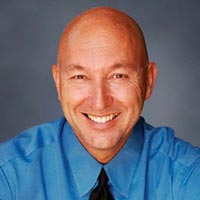 One of Gary's most significant achievements as a dental practice management coach is transforming his own practice, LifeSmiles, from one that was infected with PPO plans, no effective marketing strategy, and an overhead of 80% to a very successful dental practice that is currently one of the top-performing practices in the US.
One of Gary's most significant achievements as a dental practice management coach is transforming his own practice, LifeSmiles, from one that was infected with PPO plans, no effective marketing strategy, and an overhead of 80% to a very successful dental practice that is currently one of the top-performing practices in the US.
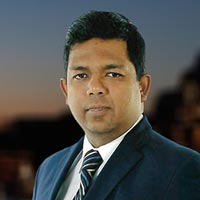 As CEO of Ekwa Marketing, Naren has over a decade of experience working with dental practices and helping them attract the ideal type of patients to their practices. It is his goal to help dentists do more of the type of dentistry they love with the help and support of effective digital marketing.
As CEO of Ekwa Marketing, Naren has over a decade of experience working with dental practices and helping them attract the ideal type of patients to their practices. It is his goal to help dentists do more of the type of dentistry they love with the help and support of effective digital marketing.
